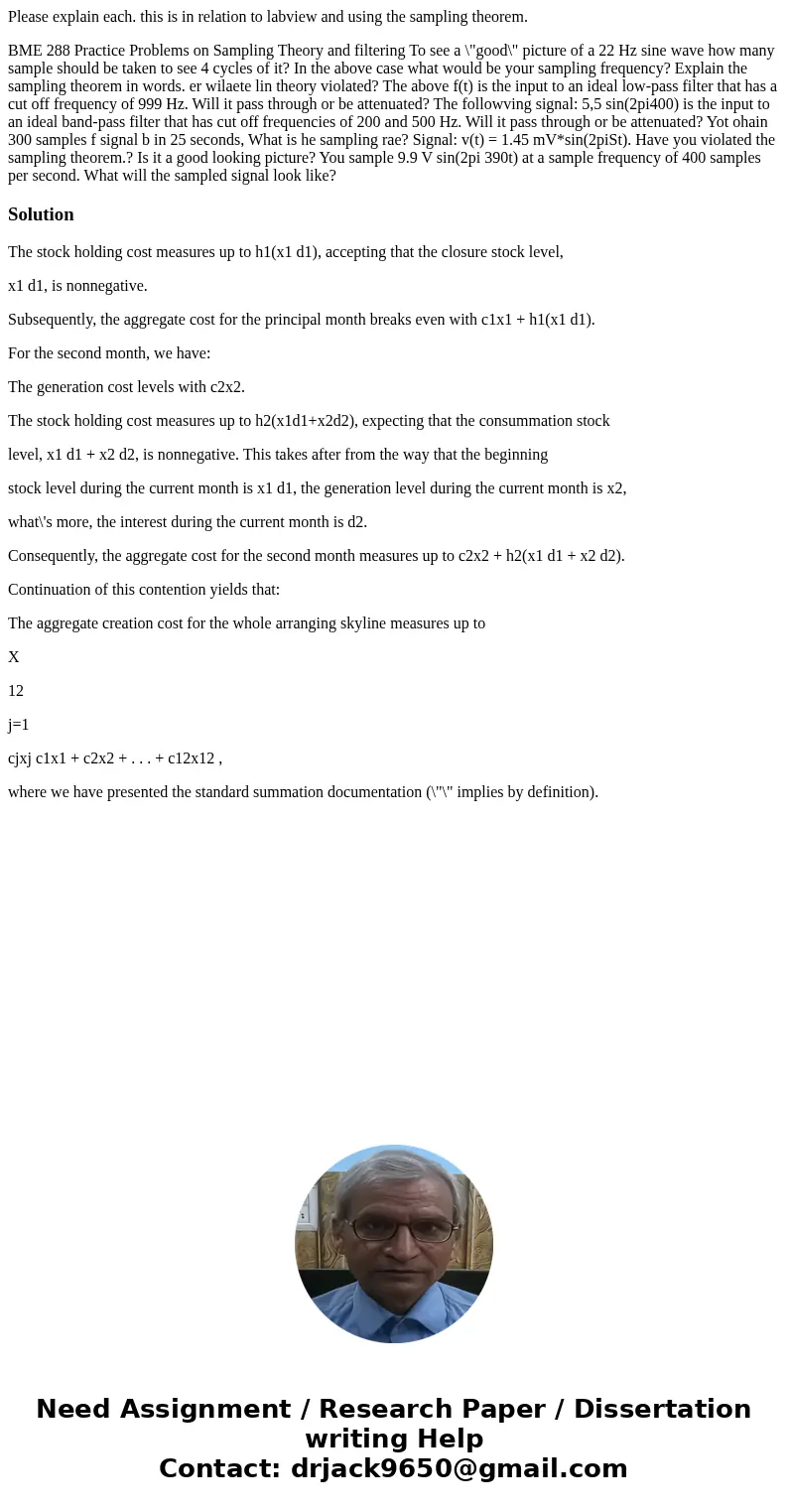Please explain each this is in relation to labview and using
Please explain each. this is in relation to labview and using the sampling theorem.
BME 288 Practice Problems on Sampling Theory and filtering To see a \"good\" picture of a 22 Hz sine wave how many sample should be taken to see 4 cycles of it? In the above case what would be your sampling frequency? Explain the sampling theorem in words. er wilaete lin theory violated? The above f(t) is the input to an ideal low-pass filter that has a cut off frequency of 999 Hz. Will it pass through or be attenuated? The followving signal: 5,5 sin(2pi400) is the input to an ideal band-pass filter that has cut off frequencies of 200 and 500 Hz. Will it pass through or be attenuated? Yot ohain 300 samples f signal b in 25 seconds, What is he sampling rae? Signal: v(t) = 1.45 mV*sin(2piSt). Have you violated the sampling theorem.? Is it a good looking picture? You sample 9.9 V sin(2pi 390t) at a sample frequency of 400 samples per second. What will the sampled signal look like?Solution
The stock holding cost measures up to h1(x1 d1), accepting that the closure stock level,
x1 d1, is nonnegative.
Subsequently, the aggregate cost for the principal month breaks even with c1x1 + h1(x1 d1).
For the second month, we have:
The generation cost levels with c2x2.
The stock holding cost measures up to h2(x1d1+x2d2), expecting that the consummation stock
level, x1 d1 + x2 d2, is nonnegative. This takes after from the way that the beginning
stock level during the current month is x1 d1, the generation level during the current month is x2,
what\'s more, the interest during the current month is d2.
Consequently, the aggregate cost for the second month measures up to c2x2 + h2(x1 d1 + x2 d2).
Continuation of this contention yields that:
The aggregate creation cost for the whole arranging skyline measures up to
X
12
j=1
cjxj c1x1 + c2x2 + . . . + c12x12 ,
where we have presented the standard summation documentation (\"\" implies by definition).

 Homework Sourse
Homework Sourse